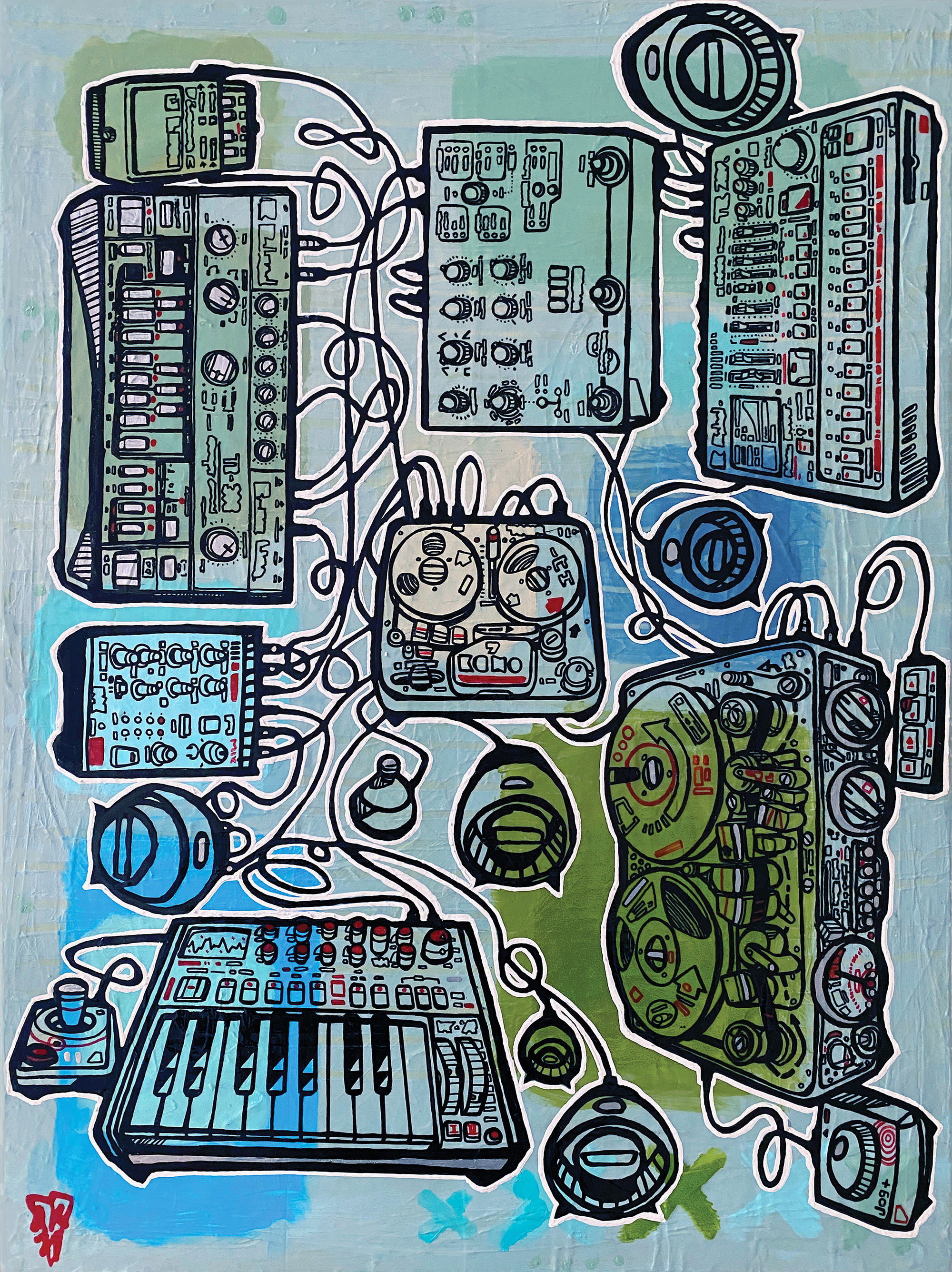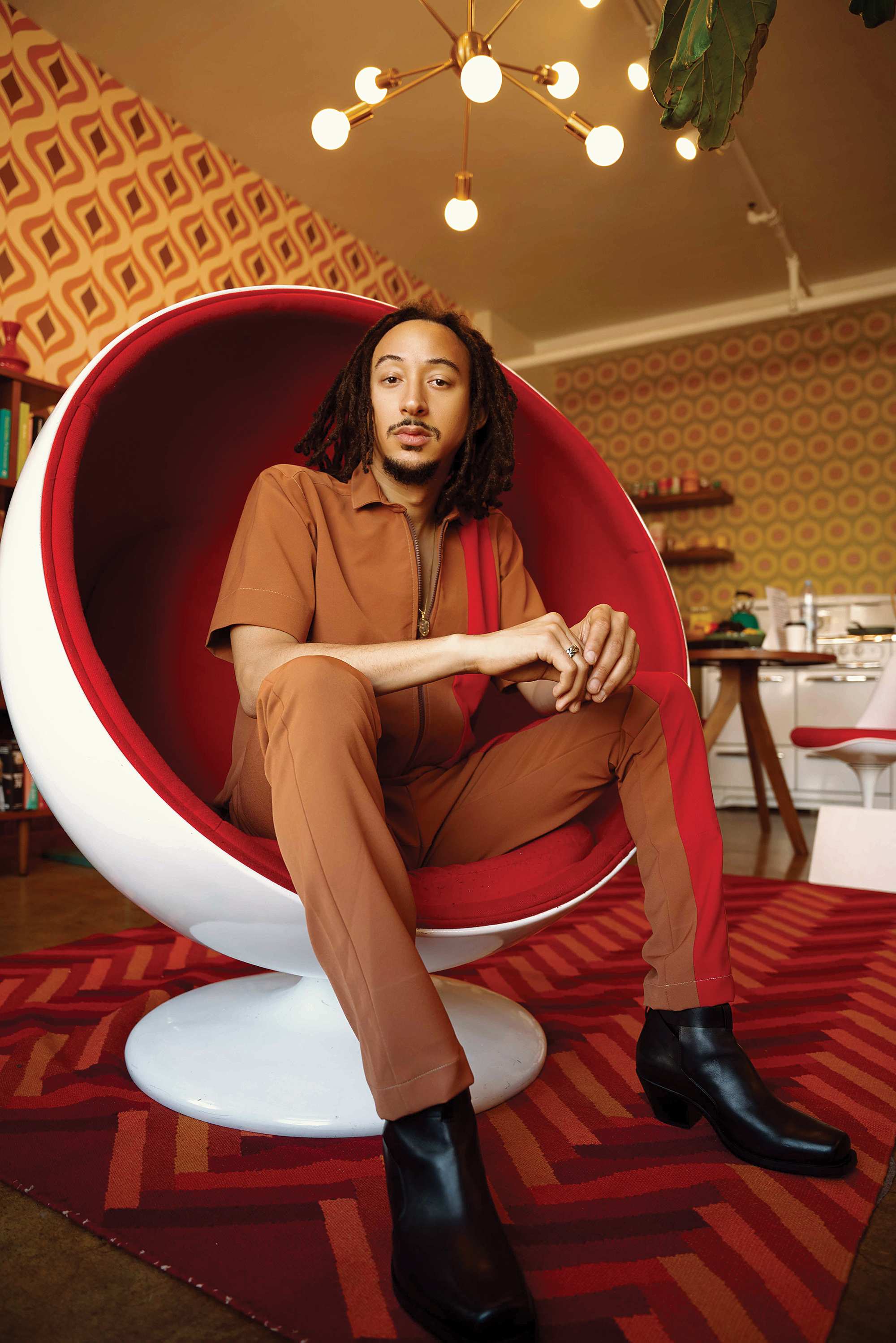With two feet planted firmly in the jazz world, as well as tentacles reaching into hip-hop, R&B, ambient, world music, and experimental genres, Grammy-nominated producer, composer, and trumpeter Theo Croker makes his voice heard far and wide. His latest release BLK2LIFE // A FUTURE PAST is a sonic melting pot “inspired by the forgotten hero’s journey towards self-actualization within the universal origins of blackness.” With pandemic time on his hands, Theo produced and constructed this latest release in a non-traditional way, creating a musical environment for himself and his collaborators to bring this celebration of Afro-origin and reclamation of culture to life.
What got you interested in the recording aspect of making records?
I’m coming out of an instrumental world, where we’re expected to come in the studio, perform, and leave. To me, that was pointless, because it’s like, “Man, we’re not using all of this gear. We’re not doing the most we can do and figuring out the coolest thing we can with all of this studio equipment.” It started back with my album Escape Velocity. I wanted to start taking advantage of all we can do in the studio. When it came time to make this newer record, I had an unusual amount of time on my hands to sit down and shape out every song before I even entered the studio. I did that using Ableton [Live] and [Avid] Pro Tools. At the crib, I have a Fender Rhodes I bought during the pandemic as well as a little MIDI keyboard. Having every song already shaped out and creating a sonic palette, most of that was already done at the crib before we came into the studio. When I did inject the band members into it, they were playing into these already prefabricated little universes for each song. That was me wanting to really produce it. I wanted to do exactly what one would do on a hip-hop record, where they gotta do hella shit because there can’t just be a beat and somebody talking. They’ve got to have all this weird shit going on. A lot of those samples [on this record] are coming out of the ‘70s, from Gary Bartz and Donald Byrd. I was thinking, “We should revert this back to being about the instruments and everything again. Seeing how much of a universe we can create for each song.
That’s a very different process than say an early-’50s Charlie Parker record or a Miles Davis album. They came in, had lead sheets, and guys would just blow. You’ve made records both ways.
Yeah, I have. Those cats were masters, in general. They would go in the studio for half a day and play a whole bunch of shit that they’d never played before – songs that they’re handed – and they would make them work. People in that genre try so hard to do such “perfect” albums, when all those old Blue Note recordings are not perfect at all. A lot of the cool things that happened had been by chance. It was what they did while they were trying to learn the song. It wasn’t so purposefully, “Oh, we’re going to make this the ‘next level’ album.” No. Miles was like, “Herbie, sit on your left hand and just play one-handed.” It’s not next level. That’s just searching for something next level. Because I had pre-fabricated so much of the landscape and soundscape [of this record], the band was able to do full takes instead of overdubs. I would say 90 percent of this record is us playing something from start to finish, or playing a song – the same song – over and over again for 20 minutes without stopping, but restarting it. After we’d play it, we’d play it again. We’re trying to capture that energy of playing live. The energy of “We can’t stop the train once it leaves the station.” Any musical thing or obstacle that came up, we’d have to find a creative, in-the-moment solution for it. I wanted that element inside of it, and that comes from the whole jazz aesthetic of going in the studio and recording a take. It was trying to put the two worlds together in a way that came out with something unique.
That sounds like [Miles Davis’] Bitches Brew in reverse. That was constructed after the band had been in the studio playing, and the sonic universes were created after the fact. You created a sonic atmosphere, and let people come into it and be affected by that.
Right. It’s different to have a group of jazz musicians and say, “Okay, this song is going to be exactly this long, and at these points these types of things need to happen. Here’s this little universe I want you to play inside...


